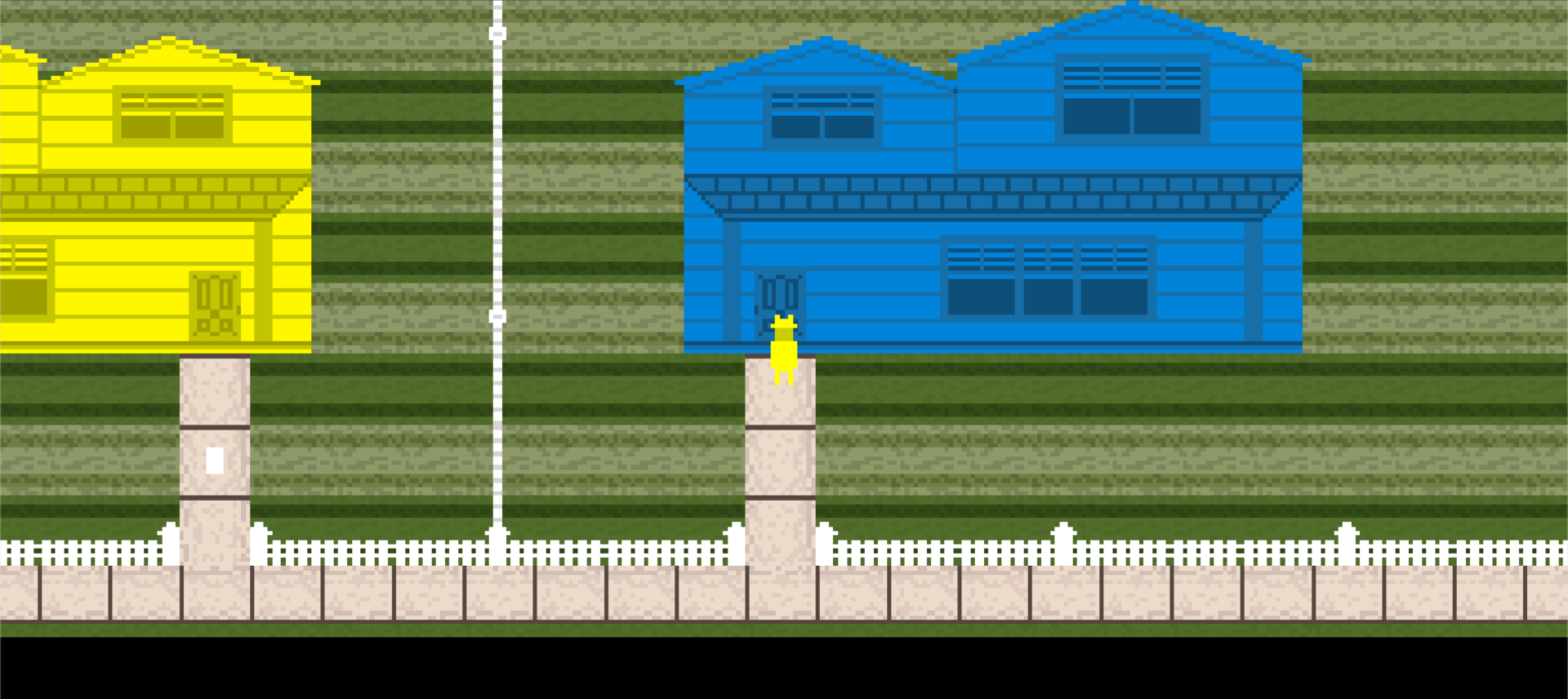 “Borrowing” is a top-down pixel art game that involves stealing from your neighbor’s house. The more you steal the more you learn about your character, but the more strangeness occurs in both your neighbor’s home and your own. As of now, I have the majority of base art in the game (not including art that would be involved for any currently planned or unplanned events) and movement, collision, and transportation between maps all up and running.
“Borrowing” is a top-down pixel art game that involves stealing from your neighbor’s house. The more you steal the more you learn about your character, but the more strangeness occurs in both your neighbor’s home and your own. As of now, I have the majority of base art in the game (not including art that would be involved for any currently planned or unplanned events) and movement, collision, and transportation between maps all up and running.
Like a lot of my classmates, I was fairly surprised at how easy the sprite art for my game was to make. I purposefully adopted a very simple style – wanting to use as few and as solid colors as possible, while also limiting myself to 16-bit – as a challenge, but it turned out to be a huge advantage. In contrast to many of my classmates who got hung up on perfecting their art, I found that I could pump out a few simple textures very quickly and be very satisfied with the result. Looking ahead, I see only a few modifications I would like to make with the art itself. Being in set in a universe much like our own was very helpful in this regard as well since I had a lot of real life objects to reference and even take colors from directly if I wanted to as shown below.
As I mentioned in my second post, coding has certainly been the hardest part of this project for me. The video tutorials were very helpful in getting my game off the ground very quickly, but it was a bit more difficult for me to find ways of extrapolating from those lessons and doing something new with them. My time also was certainly not managed very well, especially towards the end of the semester, and I would very likely have a solution to my problem (in this case not being able to pick up and put down objects, the main mechanic of the entire game) if I had dedicated more time to sitting down and cranking out some code and/or looking up solutions to what I want to achieve even if it didn’t work. A failure is still a result and a way of pointing out how not to do things in the future, after all.
As far as inspirations go, I probably can’t say much that I haven’t already said. Jason Rohrer’s Passage was an incredible piece to refer to when it came to abstraction and mechanic-as-metaphor; Every Day the Same Dream was a great piece of moody monotony; Packing Up the Rest of Your Stuff on the Last Day at Your Old Apartment is a game that I wish I could play over and over again for the first time every time I play, it’s the exact inverse of what I’m going for.
Designing games is entirely new to me but playing them isn’t, so I was surprised on multiple levels on how well I did in some areas, how poorly I did in others, and what I learned through being in this class. My professor seems to think that I’m pretty good at designing a game, but I have a feeling that’s the kind of compliment that she gives to all of her students. I honestly couldn’t tell you what makes my game “work”, but I think there may be something to be said about its simplicity. A majority of my classmates’ games dealt with either more than three maps or had about three very large maps, though there were a few others that had two maps or three maps of about my size, and I want to believe that in all of those cases that being able to design with economy of space in mind, especially when working on a project for only a single semester, is a real advantage. My main (only?) mechanic in “Borrowing” is very simple too: pick this object up here, plop it down there, rinse and repeat until you have nothing else to pick up and plop down. Getting to a place where I’ve done something simple that, in a “final product” state, is hopefully engaging is pretty nice feeling.
But that’s just what I feel like I had trouble with: being engaging. My initial test of the game had the player run around to want to do other things, and it’s here that I found how difficult it can be to balance directing a player with information while also keeping them engaged while also not holding their hand. What I found out – something that was repeated to me quite often by my professor – was to give players what they want but not in the way they want it. Let them open that box and let the contents get popped out. Let them interact with those objects as much as they want. But when their back is turned, let them know they’re being watched. Or remind them that they’re not safe. There were a lot of really constructive suggestions in this vein and I was incredibly appreciative to hear what they had to say to get me into that space where I’m now comfortable with not only getting my player engaged but having some fun on my end and screwing around with their head a bit. I honestly wish I could show off what I have in mind with this kind of stuff in class; I think it would have been very fun.




